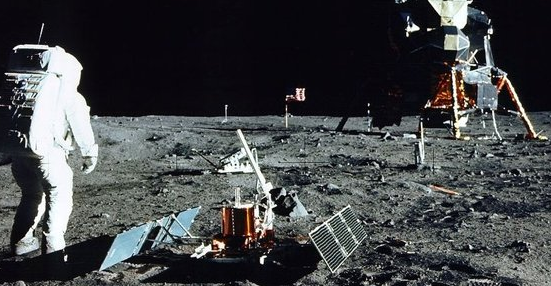Moon Mission Update!
Artemis 2 has set its course for the moon, reigniting human space exploration where it had last halted in 1972. This groundbreaking expedition is the second in NASA's Artemis program and the first to include a crew, marking a significant advancement in our journey toward understanding our universe.
The Artemis 2 crew consists of a trio of NASA astronauts- Reid Wiseman, Victor Glover, and Christina Koch, along with Canadian Space Agency's astronaut, Jeremy Hansen. These astronauts are scheduled to undertake an approximately 10-day lunar flyby mission, tentatively set for November 2024.
Artemis 2 will utilize NASA's colossal Space Launch System (SLS) megarocket and Orion spacecraft to launch the crew and collect data on Orion and the crew's performance. This data will determine the readiness of the Artemis program to transport people to the moon's surface.
The inclusion of a CSA astronaut is a testament to Canada's dedication to the Artemis program, highlighted by their contribution to Canadarm3, a robotic arm designed to service the NASA Gateway space station. In return, the CSA will be awarded astronaut seats and science slots on some future Artemis missions.
The launch date
Artemis 2's launch date, while scheduled for November 2024, depends on the readiness of certain aspects. NASA is meticulously analyzing data from Artemis 1 to make necessary modifications for the Artemis 2 mission. Artemis 1 collected essential radiation and engineering data to evaluate the SLS and Orion spacecraft's readiness for human transport.
The astronauts for Artemis 2 will require new spacesuits designed to withstand the cislunar environment, which experiences higher radiation levels than the relatively sheltered confines of low Earth orbit. The manufacturer, Axiom Space, unveiled a prototype in March 2023, but there haven't been significant updates since.
As of June 2023, NASA has been diligently assembling the hardware for Artemis 2, in anticipation of the necessary testing and integration later. A major enhancement from Artemis 1 is the availability of an environmental system for the astronauts' oxygen supply, a requirement not needed for the uncrewed mission.
The Artemis 2 crew has undergone rigorous training at Johnson Space Center. Their selection was officially announced on April 3, 2023, at an event held at Ellington Field.
NASA Administrator Bill Nelson said, "Reid, Victor, Christina, and Jeremy, each of these adventurers have their own story. But together, they represent our creed: E pluribus unum — out of many, one. Together, we will usher in a new era of exploration for a new generation of star sailors and dreamers — the Artemis Generation."
Artemis 2 has the ambitious goal of confirming the operational readiness of the SLS and Orion spacecraft systems in a deep space environment. The mission is scheduled to last up to 3 weeks, during which the 4 astronauts will set a new record, becoming the furthest people to fly from Earth since Apollo 13 in 1970.
This mission will serve as a stepping stone to the Artemis program's next phase, Artemis 3. This next mission plans to land on the moon's surface in 2025, marking a significant event in human space exploration. It will have been over half a century since the last human touchdown, with Apollo 17 in 1972.
However, this timeline has been faced with skepticism because of delays in developing the human landing system and spacesuits. Despite the issues, the Artemis program remains committed to achieving its ambitious aim of returning humans to the moon and beyond.
Ultimately, Artemis 2 is more than a mission. It's an embodiment of the spirit of human exploration and our unwavering pursuit of knowledge. Its success will not only pave the way for future Artemis missions but also symbolize our capacity to reach beyond our planet, further into the cosmos.
Reference
● Howell, E. (2023). NASA's Artemis 2 mission: Everything you need to know. Available at- https://www.space.com/artemis-2-humans-moon-orbit
● Tariq, M. and Howell, E. (2023). NASA's Artemis 2 moon mission: Live updates. Available at-space.com/news/live/nasa-artemis-2-moon-miss







